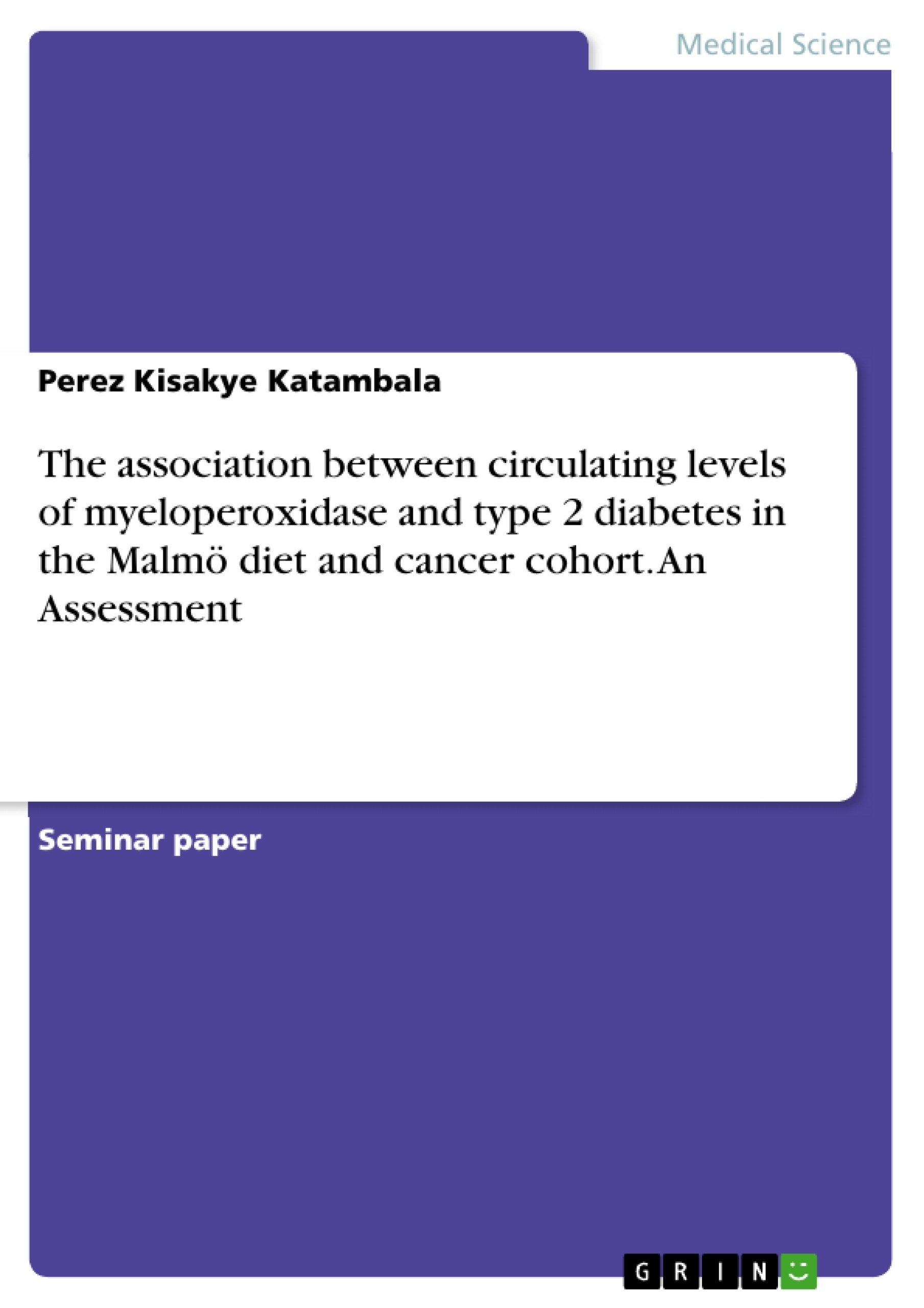Chronic inflammation is suggested to play an important role in the pathogenesis of many chronic conditions. Chronic inflammatory biomarker Myeloperoxidase (MPO) has been reported in several studies that have investigated its role in cardiopulmonary events. However, there are limited studies that investigated its relationship with type 2 diabetes.
In this text the relationship between plasma MPO concentration and lifestyle and socioeconomic factors and incident type 2 diabetes mellitus in the Malmö diet and cancer cohort (MDC) will be investigated.
In order to do this a prospective cohort study of 4544 participants was drawn from MDC cardiovascular sub-cohort, with no type 2 diabetes at baseline between 1991 and 1996. Plasma MPO concentration were measured using Olink CVD kit. The cox proportional hazard regression analysis was used to determine the relationship of plasma MPO concentration with incident type 2 diabetes.
Inhaltsverzeichnis (Table of Contents)
- Abstract
- Table of contents
- List of abbreviations
- Introduction
- Public health relevance
- Aim of the study
- Objectives
- Method and Material
- Study sample
- Consent
- Identification of incident diabetes
- Biochemical MPO analysis
- Measurements and definition of variables
- Statistical analysis
- Results
- Discussion
- Strengths and limitations of the study
- Clinical implications
- Conclusion
- References
- List of figures and tables
- Appendices
- Popular science summary
- Acknowledgement
Zielsetzung und Themenschwerpunkte (Objectives and Key Themes)
This study investigates the relationship between plasma myeloperoxidase (MPO) concentration and incident type 2 diabetes mellitus in the Malmö Diet and Cancer Cohort (MDC). The study aims to determine the association of plasma MPO concentration with lifestyle and socioeconomic factors and to assess its predictive value for type 2 diabetes risk.
- The role of chronic inflammation in the development of type 2 diabetes.
- The association between plasma MPO concentration and incident type 2 diabetes.
- The influence of lifestyle and socioeconomic factors on plasma MPO concentration and type 2 diabetes risk.
- The potential of MPO as a biomarker for preclinical type 2 diabetes or insulin resistance.
Zusammenfassung der Kapitel (Chapter Summaries)
The introduction provides background information on the prevalence and global impact of type 2 diabetes, highlighting the role of chronic inflammation in its pathogenesis. The study's objectives and the importance of investigating the relationship between MPO and type 2 diabetes are outlined. The methods section details the study design, participant selection, data collection, and statistical analysis employed. The results chapter presents the findings on the association between plasma MPO concentration, lifestyle factors, and the risk of incident type 2 diabetes. The discussion section interprets the findings, addresses the study's strengths and limitations, and explores the clinical implications of the results. The conclusion summarizes the key findings and emphasizes the need for further research on the pathophysiological role of MPO.
Schlüsselwörter (Keywords)
Type 2 diabetes, chronic inflammation, myeloperoxidase (MPO), Malmö Diet and Cancer Cohort (MDC), socioeconomic factors, lifestyle factors, risk prediction, biomarker, insulin resistance.
- Quote paper
- Perez Kisakye Katambala (Author), 2016, The association between circulating levels of myeloperoxidase and type 2 diabetes in the Malmö diet and cancer cohort. An Assessment, Munich, GRIN Verlag, https://www.hausarbeiten.de/document/338105


